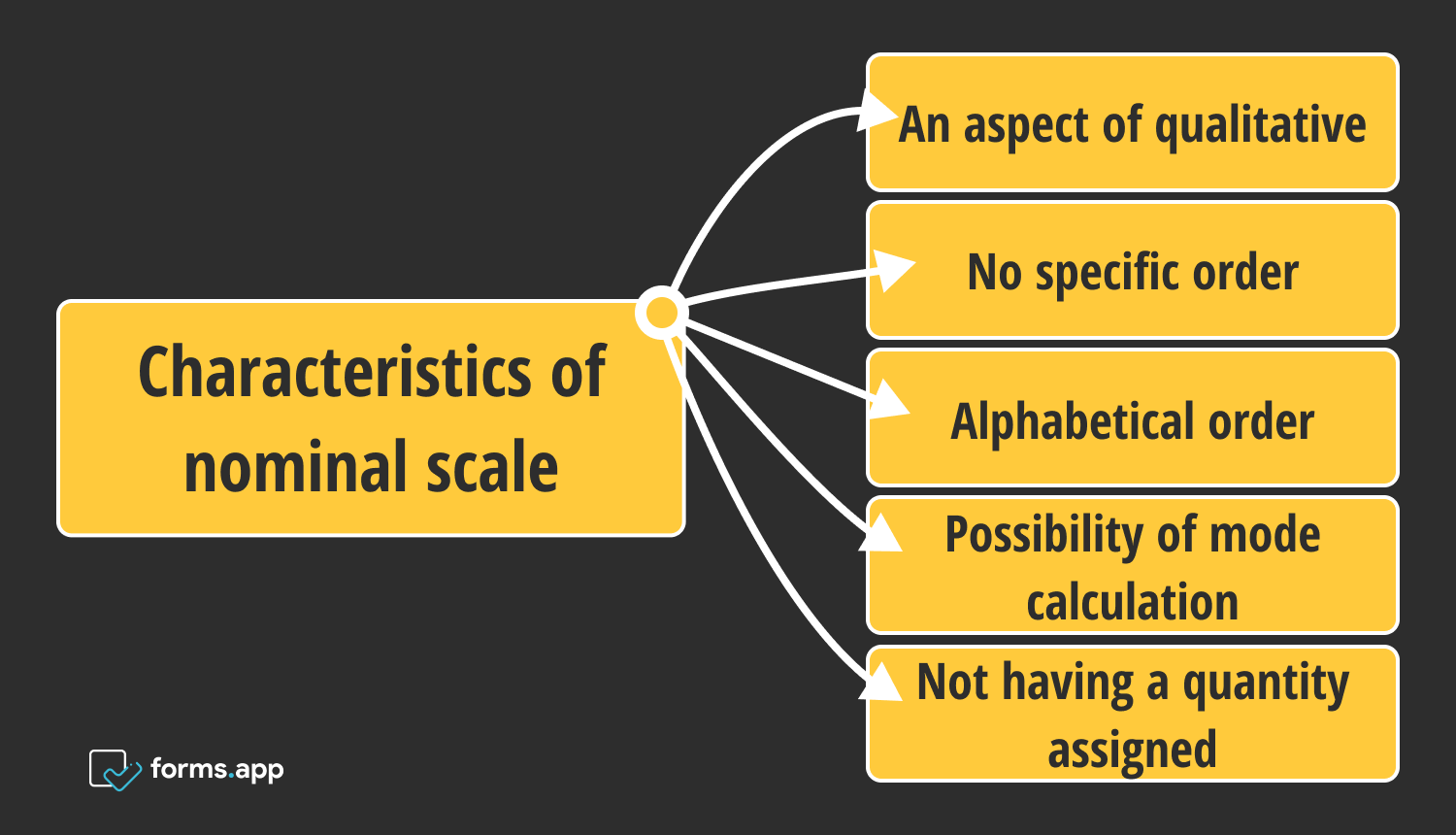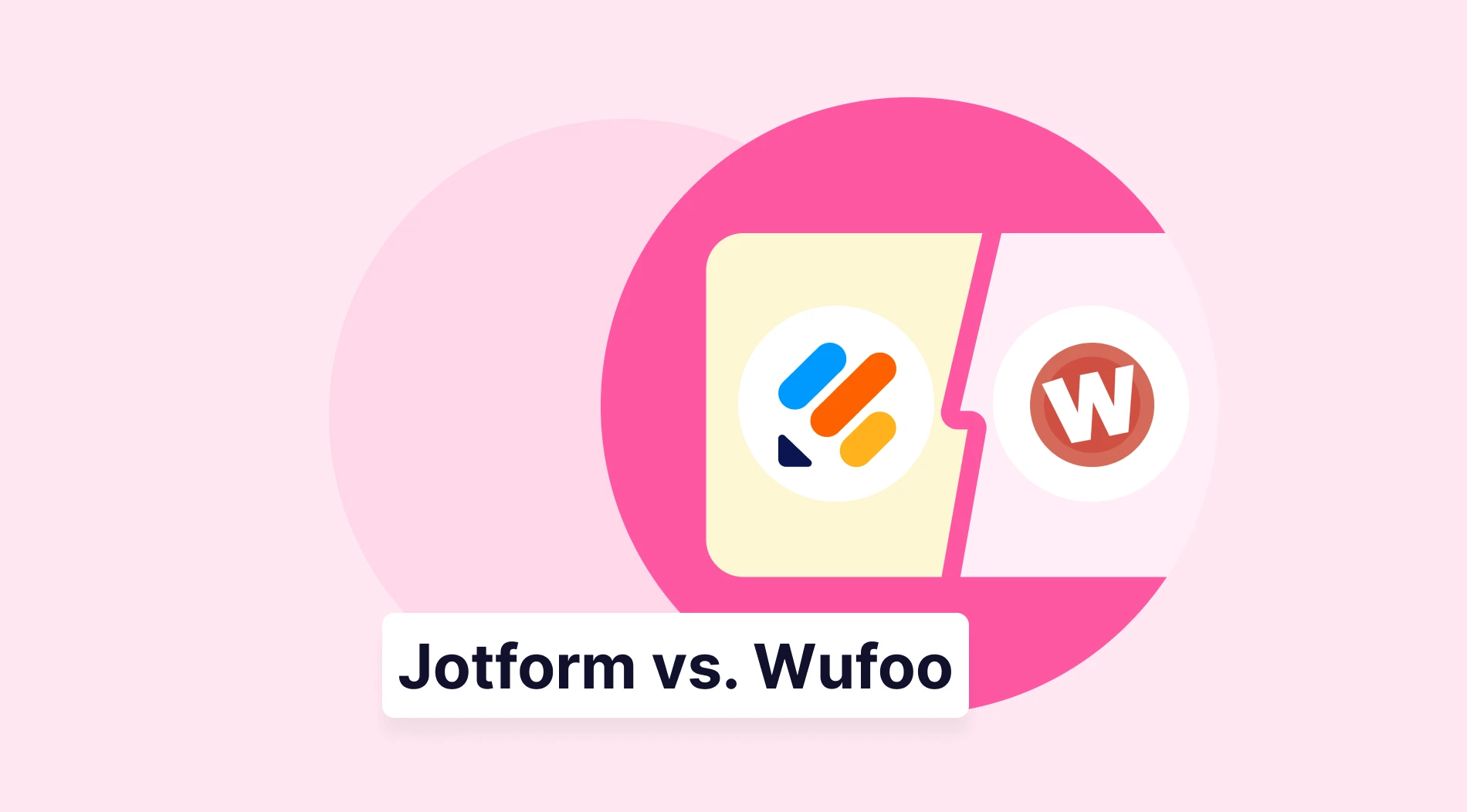Knowing the degree of measurement is critical since it will help you select how to analyze your acquired data. A scale of measurement is the type of information that numbers provide in statistical analysis. There are four measurement scales: nominal, ordinal, interval, and ratio.
A nominal scale is best for you if you need to collect answers that are not numerical while conducting your survey. This article will explain the definition of nominal scale in research, characteristics of nominal scale, nominal scale example, when to use nominal measurement scale, and frequently asked questions about the nominal scale.
The definition of nominal scale
A nominal scale is a measuring level in which all responses are grouped into groups based on similarities or differences. Numbers or labels are used only for identification or categorization in this scale, with no inherent order or value link between the categories.
The nominal scale is the lowest level of measurement since you can group observations and not rank them. A nominal scale is employed when data can be divided into distinct categories or groups, but the types lack intrinsic hierarchy or numerical significance.
Characteristics of nominal scale
Nominal scales only have the description feature, which implies they have unique labels to identify or assign values to the elements. When used for identification, there is a tight one-to-one correspondence between an item and the numerical number ascribed to it. We have listed the essential characteristics for you to understand the nominal scale better:
- An aspect of qualitative: Nominal scales represent qualitative or categorical data, such as gender, race, or marital status. This data will always have this qualitative aspect, where the alternatives for responding to the surveys are qualitative.
- No specific order: Nominal scale categories are arbitrary and have no inherent charge or size. There is no particular order to these data.
- Alphabetical order: A nominal scale’s categories are mutually exclusive and have no numerical or ranking order. In most situations, nominal data is presented alphabetically rather than numerically.
- Possibility of mode calculation: The mode is the most often provided answer for this data from many responders. If most respondents offer any response to a specific question, that answer is believed to be the research mode. For nominal data, the way is the best measure of central tendency.
- Not having a quantity assigned: Nominal data cannot be given any quantitative feature. It will always be in the form of vocabulary, making statistical, logical, and numerical analysis impossible. This implies that the researcher cannot execute any addition, subtraction, or multiplication with the data.

Nominal scale characteristics
Examples of nominal scale
Most nominal data is organized into categories, with each response fitting into just one. The numbers associated with variables on a nominal scale in psychology are only used to categorize the data; they don’t reflect rank or order. Some examples of nominal data are:
1) What is your gender?
- Male
- Female
2) What is your type of house?
- Ranch-style houses
- Farmhouse-style houses
- Bungalow
- Duplex
3) What is your eye color?
- Black
- Brown
- Blue
- Green
- Hazel
4) What is your hair color?
- Blonde
- Brunette
- Black
- Red
- Auburn
5) What is your favorite type of pet?
- Dog
- Cat
- Fish
- Bird

A nominal scale question example
When to use a nominal scale?
A nominal scale is utilized when data can be classified into separate categories or groups, but the classes don’t have a numerical value or specific order. Here are some instances of when a little scale should be used:
- Labeling and naming: When assigning names or labels to objects, locations, or events, such as distinct categories of products, a nominal scale can be used to categorize them without regard for rank or order.
- Qualitative answers: A nominal scale can categorize qualitative replies while conducting a survey and gathering non-numerical responses, such as asking individuals to score their happiness with a product.
- Data are categorical: When gathering data on people’s gender, marital status, ethnicity, or education, a nominal scale can be utilized to categorize the data into discrete categories without any inherent order.
- Data grouping: A nominal scale can be used to group data in no particular order when dividing data into different groups or classes, for example, classifying people based on gender or age.
A real-life example of a nominal scale is when you do survey research that asks respondents to select their favorite car brand from a predetermined list of options, such as Toyata, BMW, Audi, Mercedes, etc. The response options, in this case don’t have any inherent or quantitative value. Respondents can simply categorize the different brands based on their names.
Frequently asked questions about the nominal scale
The significance of the nominal scale resides in its capacity to offer an organizational framework for data and ease the classification and identification of various groups. So many issues with the nominal scale need to be clarified. We looked into the following questions regarding the nominal scale:
The Likert scale is a type of ordinal scale. The Likert scale assesses respondents’ attitudes or levels of agreement and disagreement on a subject by asking them to select from a list of answer alternatives such as “strongly agree,” “agree,” “neutral,” “disagree,” and “strongly disagree.” The selections are arranged in a positive to negative sequence, reflecting a rating of views or levels of agreement.
A nominal scale is a measuring scale that divides variables into different categories or groups with no regard for the order or size of the types. On the other hand, an interval scale is a measuring scale that categorizes variables and measures the magnitude or distance between them meaningfully and consistently.
The significant distinction between a nominal scale and an interval scale is that a nominal scale does not quantify the distance or size between the categories, but an interval scale does.
The nominal scale is the most basic measure for categorizing data into groups or categories. In contrast, the ratio scale is a more sophisticated measuring scale that categorizes data, specifies the order, and creates meaningful gaps between values.
The ratio scale offers a more accurate variable measurement with meaningful intervals and a zero point, allowing for mathematical operations, as opposed to the nominal scale, which categorizes data into categories without any order or ranking.
Final words
In conclusion, the nominal scale provides an unambiguous distinction between groups, making data analysis simple and uncomplicated. The nominal scale is frequently used as a foundation for various measuring scales and a starting point for more intricate statistical analysis.
The nominal scale cannot be used to compare or calculate central tendency or dispersion measurements. This article has examined the definition of the nominal scale in statistics, nominal scale examples, when to use nominal scale, and frequently asked nominal scale questions.
forms.app, your free form builder
- Unlimited views
- Unlimited questions
- Unlimited notifications



